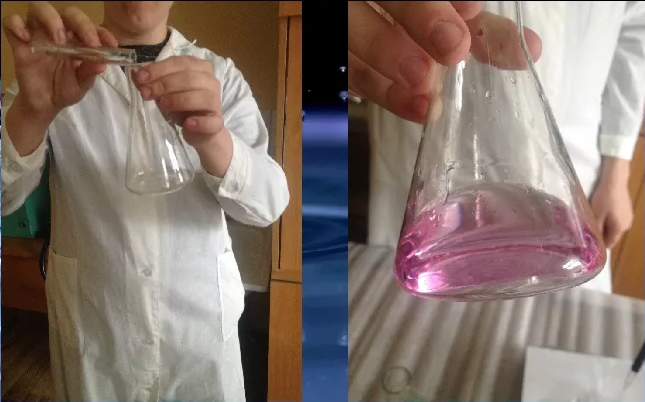Ferric ammonium alum indicator can detect silver, chlorine, bromine, iodine and thiocyanate in water under acidic conditions. We have introduced the operating principle of ferric ammonium alum indicator to you before. In order to let you know better about ferric ammonium alum indicator, today we will talk about the titration conditions of ferric ammonium alum indicator and how to eliminate interference. method.

Titration conditions of ferric ammonium alum indicator
1. Titrate under strong acid conditions
Generally, the solution [H+] needs to be controlled between 0.1-1mol/L, so that the Fe in the indicator ferric ammonium alum can exist in the form of Fe(H2O)6 and the color is relatively light. But if [H+] is relatively low, Fe will be hydrolyzed into brown-yellow hydroxyl complexes Fe(H2O)5(OH) or Fe2(H2O)4(OH), etc. The color of the titration end point of this kind of liquid is not obvious and it is not easy to distinguish. . If [H+] is lower, it is possible that Fe(OH)3 will precipitate, and the indicated end will not be reached. Therefore, the ferric ammonium alum indicator should be titrated under strong acid conditions.2. To control the amount of indicator
In the acidic solution of Ag+ titrated with NH4SCN as the standard titration solution, at the stoichiometric point, the obvious red of FeSCO2+ should be observed at the time of titration. Generally, the minimum concentration of FeSCN2+ should be 6×10-6mol/L. Due to the high concentration of Fe+, the solution will be darker orange-yellow, which will affect the end-point observation of the water quality sample. Therefore, we usually maintain the concentration of Fe3+ at 0.015mol/L during the determination, so that the titration end-point will be more obvious and cause The error is smaller.3. Shake vigorously when titrating
Since SCN and Ag+ are prone to produce AgSCN precipitates, as pointed out by Mohr's method, it has a strong adsorption effect on excess Ag+ in the solution, which will reduce the Ag concentration and cause the titration end point to appear too early. Especially when measuring I-, AgI adsorption is more obvious. Therefore, the titration must also be shaken vigorously to release the adsorbed ions.
Application range and interference elimination method
The iron ammonium alum indicator method is widely used in the determination of halide ions in water by back titration. When determining Br or I in water, because Ksp.AgBr (or Ksp.AgI) Ksp.AgscN, precipitation conversion will not occur. Therefore, it is not necessary to add nitrobenzene, but when measuring I, an excessive amount of AgNO3 must be added before adding the indicator Fe+, otherwise I- in the water will be oxidized to l2 by Fe, which will make the measurement result low. The response is2Fe3++2I-=2Fe2++I2
Under acidic conditions, many weak acid ions such as PO, AsO, CrO, SO3, CO3, C2O4, etc. will not interfere with the titration, so this method is highly selective. However, if there are strong oxidants, nitrogen low-valent oxides, copper salts, mercury salts, etc. in the water sample, they can interact with SCN and cause interference and must be removed in advance.
If the water sample is colored or turbid, which interferes with the end-point observation, potentiometric titration can be used to indicate the end-point. Such as the determination of chloride in colored or turbid water samples, the water samples can be measured directly by potentiometric titration without pretreatment. The principle of the determination is: when the water sample containing Cl is titrated with the standard titration solution of AgNO3, the concentration of Ag gradually increases during the titration process, and the concentration of Ag increases rapidly near the stoichiometric point, there will be a titration jump causing errors. Therefore, the saturated calomel electrode is used as the reference electrode, and the silver electrode is used as the indicator electrode. Observe and record the law of potential change caused by the change of Ag concentration. By drawing the titration curve, the end point can be determined. The ion selective electrode of Ag2S film can also be used as indicator electrode to measure the change of Ag concentration. To determine the end point of the titration.



